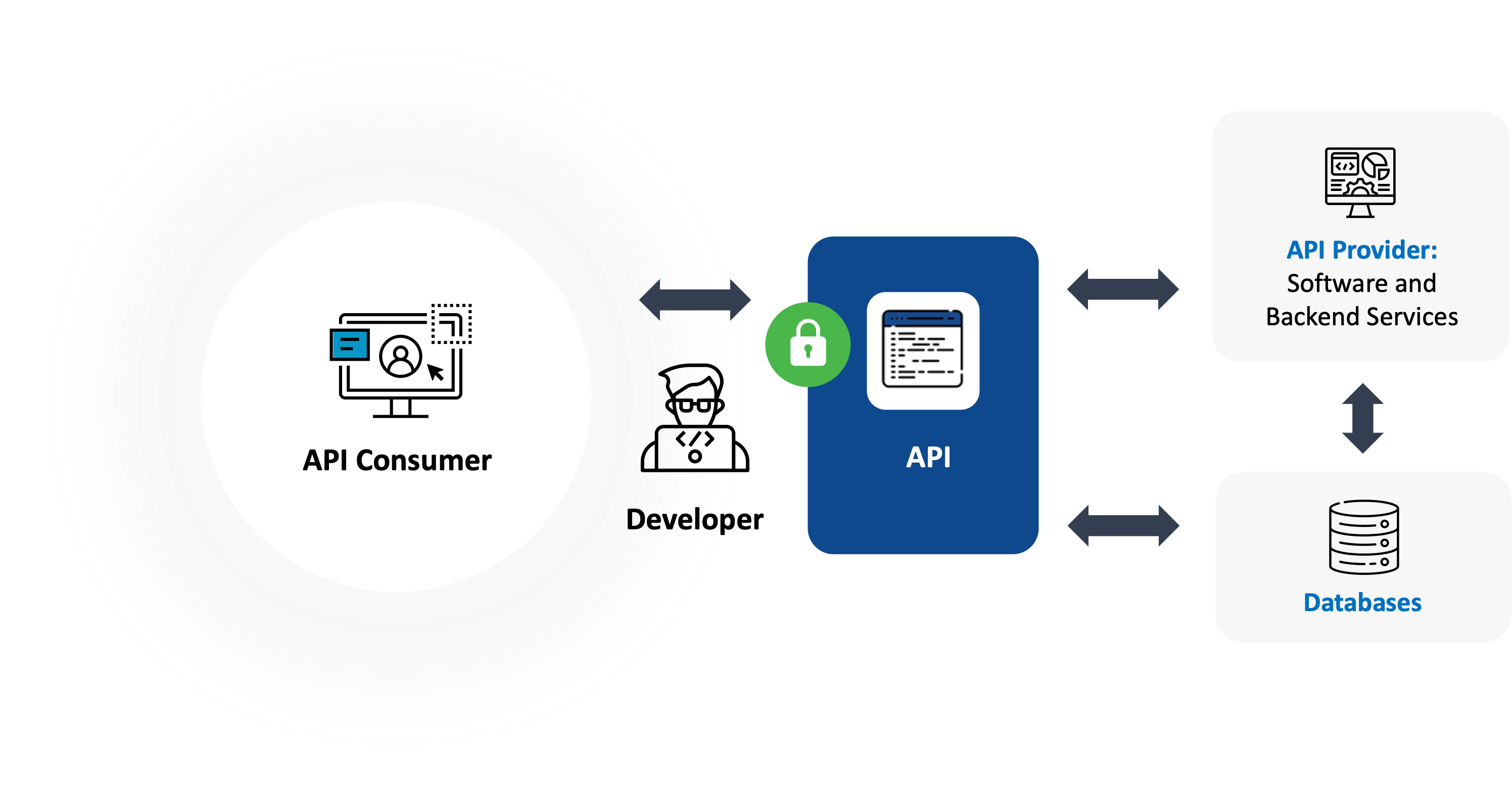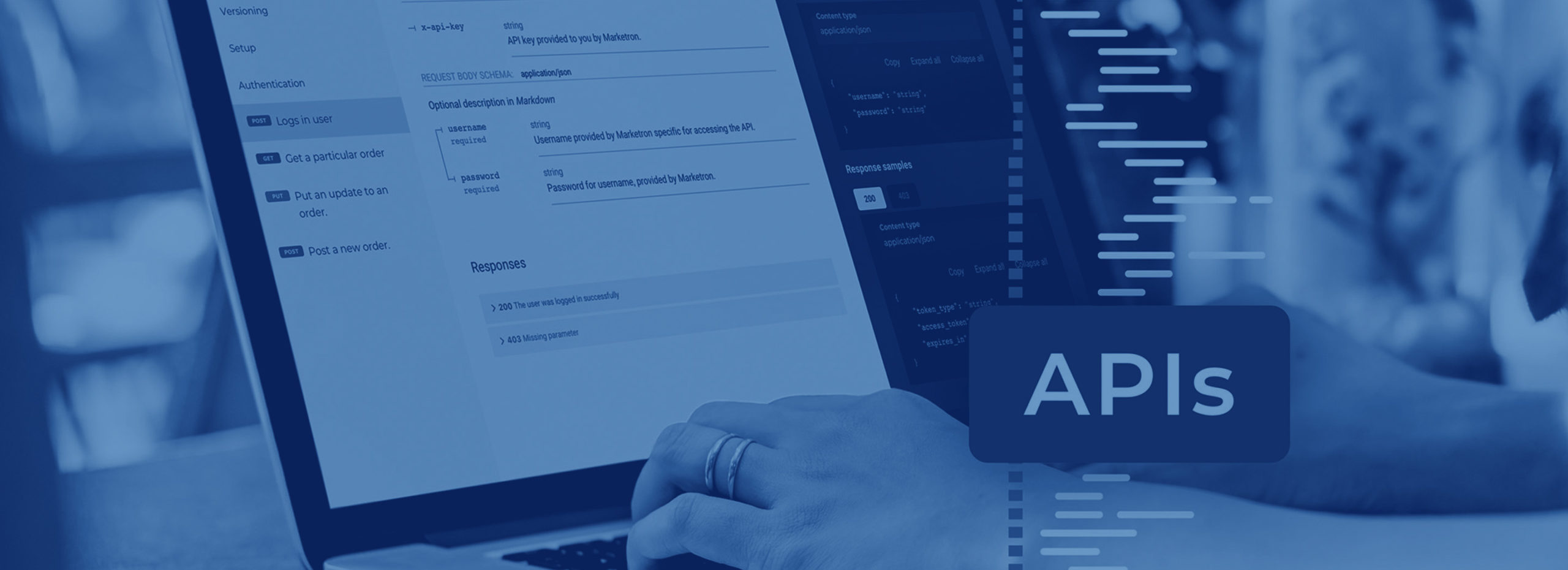APIs (application programming interfaces) may seem like an abstract technological term. However, they’re really not that complex. An API is basically an interface, which is a shared boundary. It allows two or more components of a computer system to exchange information. The exchange can be between software, hardware, peripheral devices, humans or a combination of these.
Odds are that you encounter them every day. From the programs you use in your business workflows to travel or food delivery sites, APIs are everywhere.
What Is an API?
APIs enable data sharing. In the media industry, an API can pass data from a traffic system or digital advertising platform to other systems. An example would be enabling the exchange of sales performance data from your digital solution back to your CRM (customer relationship management) platform.
However, not all APIs are the same.
RESTful APIs vs. Asynchronous APIs
RESTful APIs are more modern and agile. They provide immediate responses when there’s a call for data. These are open interfaces that make data calls much simpler and more seamless.
Asynchronous APIs must handle concurrency and callbacks, as they only request information and wait for a response. Typically, these are bulk loads and not transactional.
Legacy systems usually use asynchronous APIs, and the results are unreliable. Often, they time out because the data is so large. Lapsed data challenges cause inefficiencies and inaccuracies, and manual work is almost always necessary.
Who Are the Players in APIs?
There are two roles in the relationship. First, there’s the provider, an organization that exposes data and/or capabilities through an API. The second is the consumer. These are organizations that leverage APIs on websites or applications they develop.
How Do APIs Work?
Here’s what the process includes:
- The consumer initiates a request for information with an API call. (An API call is the process of sending a request after setting up your API with the correct endpoints. Transferring, processing and feedback of the information occurs.)
- Your information is transferred and processed, and feedback is returned.
- The API validates this and makes a call to the provider.
- The provider sends a response with the requested information.
- The API transfers the data to the consumer.

What Are API Methods?
There are four methods that describe how the technology can work:
- Get: Retrieving information about the resource (server/database). It’s the most common and only grabs data from the server; it doesn’t modify it.
- Post: Sending data to the API server to create a resource (server/database). The simplest example is a contact form on a website. “Post” requests are not idempotent. They change data on the backend server by creating or updating a resource.
- Put: Sending data to the API to update a resource (server/database). The difference is that “put” requests are idempotent. They use the request multiple times and always produce the same result.
- Delete: Removing a resource at a specific URL. One example would be removing a user from a database.
In any of these situations, the API defines the parameters. Documentation relays how to communicate. It also controls access to the data with security measures and further documents how to handle fields in the data. Finally, it determines how to invoke for individual methods, audit logging and other variables.
What Can APIs Do?
Building connections between technology serves many purposes! There are four distinct use cases.
Get Data
An interface can pull data from one source and share it with another.
Shield Complexity
Many actions may occur in the background, and the API makes things appear easy and seamless.
Extend Functionality
An application often doesn’t have all the features a user needs, so it connects to another application to gain this.
Provide Security
It fortifies the exchange of information in a secure environment. There’s never total exposure between the components.
What Pain Points Do APIs Solve?
Did you know that small companies use, on average, more than 40 applications or software tools? For larger enterprises, that number can be 200! Without integrations, these components live in silos, and so does their data. However, 95% of organizations face integration challenges, with only 28% of their applications connected. This creates difficulties with decision making, productivity and visibility.
With integrations, you boost usability by:
- Increasing efficiency with automation and eliminating manual processes
- Accessing data, sharing it and making it actionable
- Improving visibility by aggregating data from multiple sources into one
- Building a tech stack that enables scalability and flexibility
A Real-Life Example
Let’s explore a real-life example. Most people who book travel use sites like Expedia, Hotels.com or Kayak. You input your search criteria — location, days of stay and number of guests. Then, you hit search. Powerful APIs are working in the background. The website will then make a “get” request to its hotel partners to see what’s available.
In this scenario, the travel website is the consumer, and the hotels are the providers.
Once you click on a hotel to book, the travel website then makes a “post” request to that specific hotel’s reservation system API. You book on the travel website, but the hotel confirms the reservation in its system.
If you want to edit or cancel your hotel stay, a “put” or “delete” action can provide these functions.

How Do APIs Empower Broadcast Media Sales?
Are disjointed systems causing gaps in efficiency and hindering workflows? That’s often the case for broadcast media sales teams. However, APIs can solve your biggest problems by:
- Syncing order data from traffic platforms to your CRM system for insights on customers
- Extracting inventory and spot data to an existing measurement tool to analyze airtime revenue and other business data
- Loading digital and linear orders from other platforms into one ecosystem for comprehensive views and invoicing
APIs Drive Optimized Workflows and Complete Data Intelligence
APIs are a pillar of SaaS (software-as-a-service) solutions with the intent to deliver improvements in processes. By leveraging them, you can optimize workflows and get a complete picture of data. They can simplify and streamline in so many ways.






